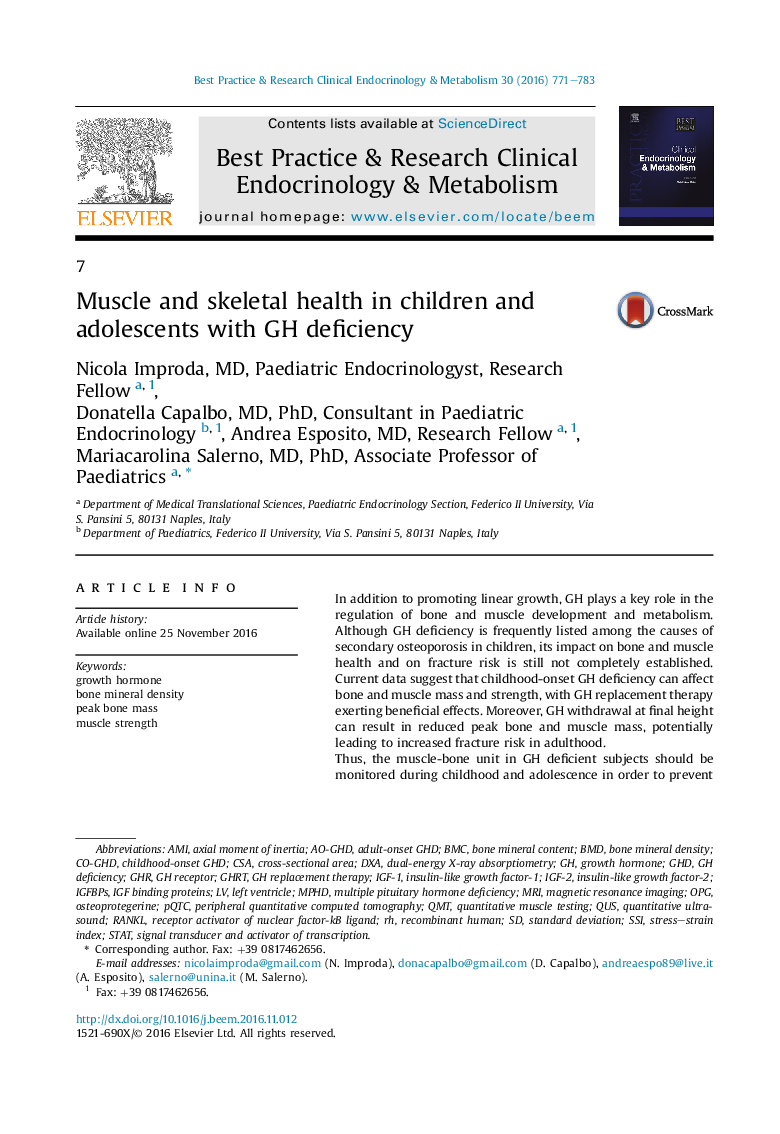| Article ID | Journal | Published Year | Pages | File Type |
|---|---|---|---|---|
| 5896472 | Best Practice & Research Clinical Endocrinology & Metabolism | 2016 | 13 Pages |
In addition to promoting linear growth, GH plays a key role in the regulation of bone and muscle development and metabolism. Although GH deficiency is frequently listed among the causes of secondary osteoporosis in children, its impact on bone and muscle health and on fracture risk is still not completely established. Current data suggest that childhood-onset GH deficiency can affect bone and muscle mass and strength, with GH replacement therapy exerting beneficial effects. Moreover, GH withdrawal at final height can result in reduced peak bone and muscle mass, potentially leading to increased fracture risk in adulthood.Thus, the muscle-bone unit in GH deficient subjects should be monitored during childhood and adolescence in order to prevent osteoporosis and increased fracture risk and GH replacement should be tailored to ensure an optimal bone and muscle health.
